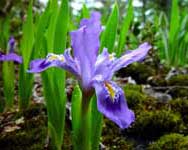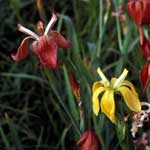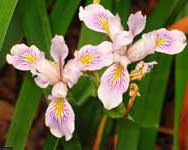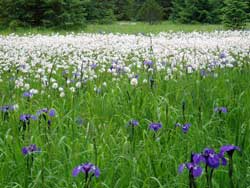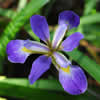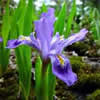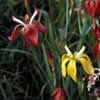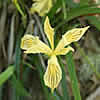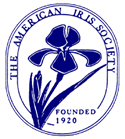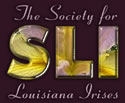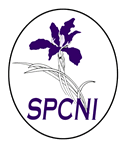USDA Forest Service Celebrating Wildflowers
|
|
|
Beauty of It AllFollow the Rainbow: Our Native Irises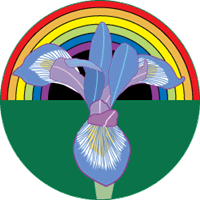 When we think of irises, our thoughts bring images of bearded irises. We think of the imported garden irises of the Siberian, Spuria, Dutch, and Japanese groups, and their myriad of colors and forms in peoples’ flower gardens. There are approximately 280 species of irises in the world. The majority of them are native to Europe and Asia. Even though the imported garden irises are very beautiful, the 28 iris species native to the United States are beautiful in their own right. Join us, as we become the mythical messenger, Iris, of Greek mythology as we share with you the story of the native irises on our national forests and grasslands. Bold and sassy or shy and reserved, irises greet us in springtime with spectacular, large, beautiful, eye-catching flowers. They exhibit a variety of colorful patterns and hues, from many shades of blue to violet, a pale delicate white or yellow, earthy tans and browns, to a flaunting copper-red, a stately deep maroon, and a brilliant yellow. Iris is depicted in mythology by a rainbow. These flowers of forest, meadow, and wetland live up to their mythical namesake. Our native irises are found in every state in the lower 48 and Alaska. Most of our irises are inhabitants of Pacific coastal areas and the southeastern states.
Irises are large, colorful, and beautiful flowers. Their different forms, color patterns, and the fact that they are easily grown and propagated, make them very popular garden ornamentals. Many of our native irises have over-lapping distributions and recurrent hybridization, both natural and artificial. This has produced hundreds of garden forms that have added greatly to the popularity of growing these native wildflowers in cultivation. Botanists and horticulturists have postulated that irises put a great deal of energy into producing numerous, very large, colorful flowers on a single plant to attract pollinators (bumblebees) at a time when many other plants are blooming and competing for pollinators as well. This tremendous use of stored reserves in spring is achievable, because unlike most flowering plants, both leaf surfaces of the iris can absorb light to provide the energy to photosynthesize and produce food for the plant that is stored in its rhizomes.
Continuing loss of habitat threatens many of our native irises. Many of them occur in fragile, easily damaged habitats, such as wet meadows, swamps and other wetland habitats. Please be very careful not to damage the irises or their habitat when viewing and photographing irises in the wild. Most of our native irises are extremely difficult to transplant. Most of these plants will not survive this disturbance. For this reason, on national forest lands, it is illegal to dig or pick the irises. For those with a green thumb, it is best to grow your native irises from seed. When collecting seed from the wild, be very conservative and take no more than 10% of the available seed. Always gain permission of the landowner before collecting seed on their property. Collecting seed on the national forests and grasslands requires a permit. Please contact your nearest Forest Service office to request a permit. Native irises and their many derived hybrids and cultivars are readily available from the nursery trade. Seed are also available from iris seed exchange programs. Some irises are rare or are becoming rare. We can reverse that trend with quality management and the help of our partners. Join us in the appreciation and conservation of our native irises and their habitats so that future generations will also be able to follow the rainbow to these precious wildflowers and enjoy their many benefits. For Further Information
Links
Follow the Rainbow: Our Native IrisesBold and sassy or shy and reserved, irises greet us in springtime with spectacular, large, beautiful, eye-catching flowers. Like a rainbow, they exhibit a variety of colorful patterns and hues from many shades of blue to violet, or a pale delicate white or yellow, earthy tans and browns, to a flaunting copper-red, a stately deep maroon and a brilliant yellow. |
|
Celebrating Wildflowers Partners |
|
| NOTE: PDF format links require the Adobe Acrobat Reader to view. | |
| top | Disclaimers | FOIA | Privacy Policy | Quality of Information | Photo Credits & Use |
Location: http://www.fs.fed.us/wildflowers/beauty/iris/index.shtml
Last modified: Tuesday, 24-Jun-2008 21:58:14 EDT
